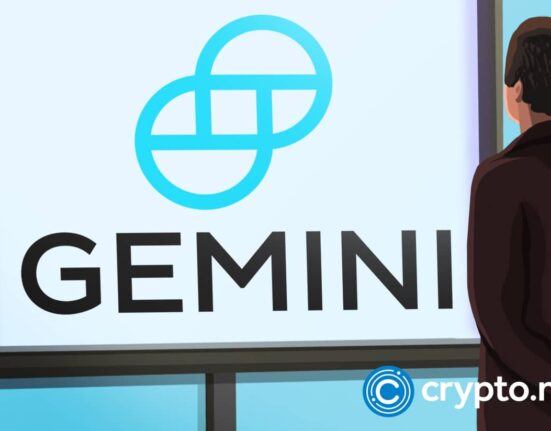
When SEC Commissioner Hester Peirce released her statement on February 21, 2025, titled “There Must Be Some Way Out of Here,” it didn’t read like a typical piece of regulatory commentary. The title, a nod to Bob Dylan’s “All Along the Watchtower,” set the tone: frustration, urgency, and maybe even a quiet plea for clarity.
The SEC published a formal Request for Information — an open call for public input on how to determine whether crypto assets should be classified and regulated as securities. It was the first real invitation in years for the broader crypto ecosystem to help shape the rules.
In response, on March 13, venture capital giant Andreessen Horowitz (A16z) submitted a proposal built around what it calls a “control-based decentralization framework.” The idea is this: if a blockchain network is open, autonomous, and no longer under the control of a central group, then the tokens operating on it shouldn’t be treated as securities.
It’s a neat concept — clean, structured, and seemingly grounded in logic. But as I dug into the details and spoke with experts, including Alice Frei, Head of Security and Compliance at Outset PR, a more complicated picture began to emerge.
Because while the proposal offers a potential “way out,” not everyone is convinced it leads anywhere good.
The Promise — and Problem — of Technology-Neutral Regulation
One of the pillars of A16z’s framework is the idea that crypto regulation should be both “merit-neutral” and “technology-neutral.” If a crypto token functions like a traditional asset — say, a share or bond — it should be treated the same way under the law.
But Frei sees a disconnect.
“A technology-neutral approach sounds fair in theory. But it just doesn’t apply cleanly to blockchain. Crypto isn’t a re-skin of the traditional financial system — it’s something fundamentally different. It constantly redefines its own economic and functional properties.”
She pointed out how each major innovation in crypto introduced entirely new economic behaviors: Bitcoin with decentralized digital scarcity, Ethereum with programmable governance, DAOs with collective decision-making, NFTs with digital ownership, and DeFi with permissionless financial markets.
“These aren’t just new wrappers for old assets. They come with entirely different risk models, incentive structures, and governance challenges. Ignoring that in the name of ‘neutrality’ means we’re regulating what crypto looks like — not what it is.”
Code Isn’t the Only Force Driving Markets
Another key argument in A16z’s proposal is that if a token’s design is fully embedded in code — meaning its economic logic is pre-programmed and autonomous — then its value shouldn’t be seen as relying on third-party efforts. And if that’s true, it wouldn’t pass the Howey test.
But according to Frei, that logic doesn’t hold up in today’s markets.
“Just because staking rewards or token burns are automated doesn’t mean the market is… Valuations in crypto are driven by much more than code. Speculation, sentiment, macro events — those things move prices just as much, if not more.”
She pointed to Bitcoin’s price movements as an example. Its code may be predictable — fixed supply, halving cycles — but its valuation fluctuates wildly based on interest rates, institutional adoption, and even viral tweets.
“Look at Terra. Its whole value proposition was a self-correcting, algorithmic stablecoin — a system designed to maintain its peg to the U.S. dollar through code-based incentives and automated supply adjustments. But even that couldn’t withstand a speculative run. Once confidence cracked, the algorithm spiraled out of control. Billions were wiped out in days. Code didn’t save it.”
The Contradiction of ‘Control-Based Decentralization’
One of the more debated parts of A16z’s proposal is the phrase itself: control-based decentralization. According to the framework, if operational, economic, and governance control have been sufficiently diffused, the network should be considered decentralized — and therefore outside the SEC’s jurisdiction.
But Frei challenged the idea that decentralization can be so cleanly measured.
“Framing decentralization around the absence of control is already tricky. But when you start building checklists to define it, you risk mistaking surface-level decentralization for real autonomy.”
In practice, she explained, most so-called decentralized systems still involve central points of influence. Developers retain control over upgrades. Governance tokens often concentrate power in the hands of early investors. And infrastructure like exchanges and custodians remain centralized chokepoints.
“True decentralization is a spectrum,” she said. “It’s not a yes-or-no checkbox. And pretending it is opens the door to performative decentralization that looks good on paper but doesn’t hold up in reality.”
A Potential Regulatory Loophole
The bigger concern, Frei warned, is how easily A16z’s proposed framework could be exploited — especially without rigorous enforcement standards.
“You could have a project that looks decentralized from the outside, but still has insiders pulling the strings.”
That might mean token distributions that appear broad but are tightly coordinated behind the scenes. Or governance structures that seem democratic but are designed to funnel decision-making to a few wallets. Or protocols that shift control just long enough to pass a regulatory test, only to re-centralize later under different names.
“If we’re not careful,” she said, “this becomes a guidebook for regulatory arbitrage. Not for transparency.”
Where Do We Go From Here?
To be clear, Frei doesn’t dismiss the effort behind A16z’s proposal. Like many in the industry, she welcomes the discussion and agrees that regulatory clarity is urgently needed. But she’s skeptical that a framework based on rigid decentralization checklists can truly reflect the complexity of today’s crypto landscape.
“We need a model that respects the innovation happening in this space,” she said, “but doesn’t ignore the human, economic, and governance dynamics driving it.”
That means acknowledging that technology is not neutral — it changes how assets behave. It means recognizing that markets are emotional, not mechanical. And it means treating decentralization as a moving target, not a box to tick.
As for the SEC, it now faces the difficult task of turning all this feedback into actionable policy. Whether or not A16z’s framework makes it into the final picture, one thing is clear: the conversation has only just begun.
“The goal isn’t just to regulate crypto,” Frei told me as we wrapped up. “It’s to do it in a way that protects people — without pretending this space is something it’s not.”
And maybe, just maybe, there is a way out of here — but only if we’re honest about where we’re starting from.









Leave feedback about this